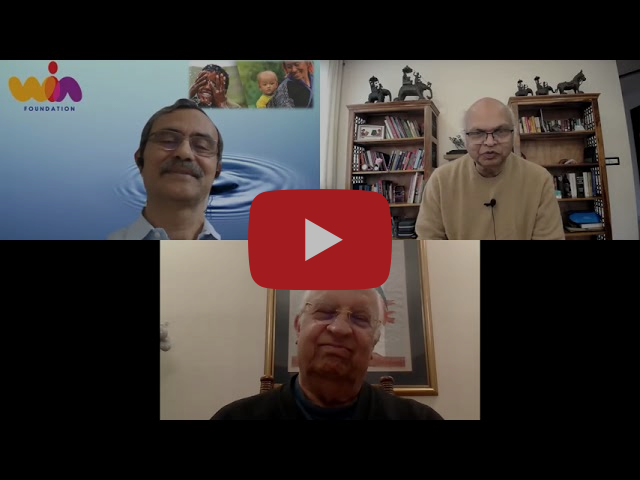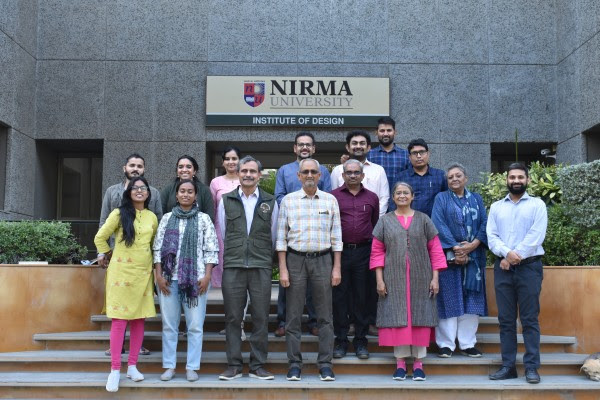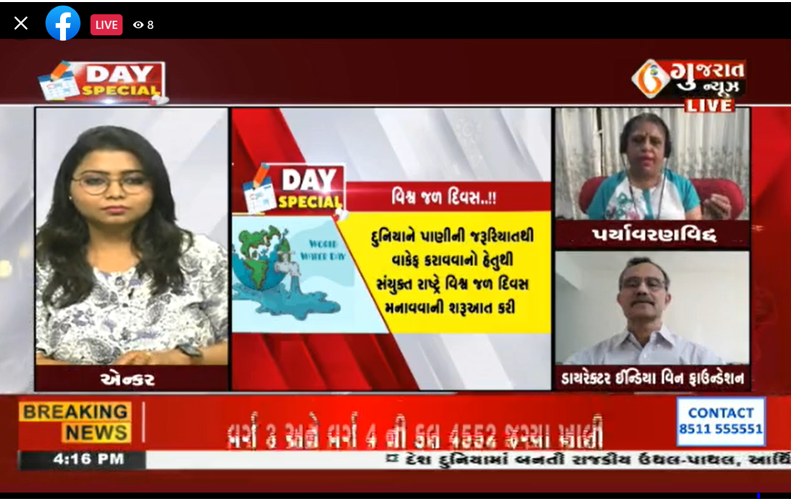
|
|
In
the above embedded video, Mr. Ron Mehta, President of WIN foundation,
and Mr. Paresh Vora, Director of India operations, discuss with Mr.
Hemant Kanakia, Founder, Maker Bhavan Foundation, about (i) WIN
foundation programs, (ii) its work in supporting innovators in Water
and Sanitation and (iii) the importance of student innovations in this
domain.
|
|
INSTITUTIONAL COLLABORATION / ASSOCIATION :
WIN and iHub Gujarat - Memorandum of Understanding
 WIN
Foundation has entered into a Memorandum of Understanding with iHub
Gujarat (Gujarat Student Startup and Innovation Hub) for
supporting social impact startups and innovations from students across
hundreds of campuses in Gujarat, part of iHUB network.
WIN
Foundation has entered into a Memorandum of Understanding with iHub
Gujarat (Gujarat Student Startup and Innovation Hub) for
supporting social impact startups and innovations from students across
hundreds of campuses in Gujarat, part of iHUB network.
This mutual collaboration aims to support the development of technology
entrepreneurship in general and help socially responsible start-ups to
define design and bring to life meaningful innovations. WIN Foundation
will support iHUB programs to
(i) build student awareness of challenge areas
(ii) mentor startups
(iii) offer WIN Market validation program to qualifying startups from iHUB
About iHub : https://ihubgujarat.in/
WIN – ACT- IDNU - Tripartite Memorandum of Understanding
 WIN
Foundation Arid Communities and Technologies and Institute of Design,
Nirma University (IDNU) entered into a Memorandum of Understanding to
support the activities which help promote innovations for social impact
among poor and lower middle-class communities in rural, tribal and
urban slum areas, primarily in domains of (i) Water and Sanitation
including smart agriculture and (ii) Maternal and Child. WIN
Foundation Arid Communities and Technologies and Institute of Design,
Nirma University (IDNU) entered into a Memorandum of Understanding to
support the activities which help promote innovations for social impact
among poor and lower middle-class communities in rural, tribal and
urban slum areas, primarily in domains of (i) Water and Sanitation
including smart agriculture and (ii) Maternal and Child.
This tripartite collaboration aims to continuously examine and explore
possibilities of working together with respect to followings:
- Jointly
explore projects, programs and activities towards achievement of the
core objectives, which may be carried out jointly by Faculty, Research
staff and students at the Institute of Design- Nirma University, staff
of ACT and WIN, and staff of partners of any of the parties.
- Support innovations for social impact through
- Joint evaluation of startup support opportunities
- Joint programs, activities, events, promoting innovation and startups in the listed domains
|
|
World Water Day - 22nd March' 2022
– Water is one thing that defines life for all the organisms on this planet. let us join hands to conserve water.
World Water Day is celebrated on 22nd March every year to highlight the importance of fresh water.
This year's World Water Water Day theme focused on groundwater under the slogan “Groundwater - the manifestation of what the eyes do not see,” which revolves around the idea that groundwater is not visible, but its impact is.
(1) On this special day, Mr.Paresh Vora, Director - India operations, WIN Foundation
came live on GPTL, Gujarat News channel as a part of panel discussion
to spread the message on need and importance of water conservation.
(2) Arid Communities and Technologies,
our Project partners for Kutch and Khambhaliya regions, published an
full page article in Divya Bhaskar with a full page message on
PGWM.
|
|
|
|
310-312, Research Park, Academic Block 9, IITG, Gandhinagar 382355, Gujarat, INDIA
8, Glenview Drive, Warren, NJ 07059, USA
|
|
|
If you wish to opt out of receiving this quarterly WIN Newsletter, please reply to this email mentioning "unsubscribe" in the subject line.
|
|
|
|
|